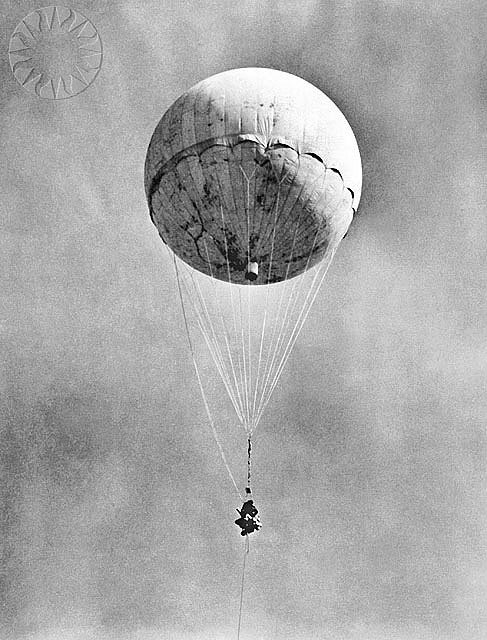Japan used to build bombs flying across the ocean
During World War II, Japanese scientists used the power of the wind to build weapons capable of flying from Asia to the Americas.
In 1940, some Japanese scientists mapped high winds by dropping many airships from western Japan to fly west. They attached many devices to the balloon to measure the winds. In the process of analyzing data from the devices, they discovered a strong trans-Pacific wind at a height of about 9km.
After knowing the existence of trans-ocean winds, in 1944, Japanese troops built a bomb for airships. According to historians, this is the first trans-oceanic weapon in the world. Japanese military leaders want to drop bombs to the US because of the wind they discovered, National Geographic reported.

A Japanese bomb balloon during World War II.(Photo: af.mil)
Experts estimate that the balloon will fly to the west coast of the United States in 30 to 60 hours. However, the unpredictability of the weather made them unable to control the attack.
"They can only drop airships into the sky and wait for further developments. However, the advantage of the transatlantic airship attack is that Japanese soldiers will not face the risk," said Dave Tewksbury, a geography expert from Hamilton University in the US said.
When the balloon falls to the ground, people will not know where they come from. But geologists can find out where the balloon comes from the material they carry. Colonel Sigmund Poole, head of the Geological Agency of the US Army, analyzed sand in an airship. After analyzing, they concluded that it was sand on the east coast of Tokyo.
Japanese troops dropped the first airship on November 3, 1944. From then until April 1945, experts estimated that about 1,000 airships had arrived in the United States. US officials noted the appearance of 284 airships. After the war, documents collected by the Americans from Japan showed that the Emperor's army had dropped 9,000 fruits.
The Japanese government stopped allocating money for the bombing program when the Allies aired their hydrogen plants. Because hydrogen becomes more scarce, the Japanese do not have enough hydrogen to pump into the balloon. In addition, the Japanese leadership at that time did not know the effectiveness of the balloons, because at that time the news about airships from the United States did not reach Japan.
The fact that the US kept secret information about airships caused some unfortunate consequences, because people did not know about their existence. On May 5, 1945, a pregnant woman and five children died when they played with a paper balloon they discovered in a forest in Oregon state. This is the only human damage caused by an enemy on American territory during World War II.
- Bombs fly remote control
- To destroy the world, only 10 fusion bombs are needed
- Listed the 7 most evil weapons in human history
- America tried to create a tsunami bomb
- Decode the most terrible atomic bomb series in history
- Pigeon birds fly over the Pacific Ocean
- Department of Pacific flying market
- The terrible truth about the damage of nail bombs
- What is a thermo-weapon?
- Differences between atomic bombs and fusion
- American bizarre bombs only kill people, do not destroy houses
- Japan's defense ministry demonstrates the first spherical flying device
 The most famous scientific failures in history
The most famous scientific failures in history Mysterious genius mechanic and the machine froze time
Mysterious genius mechanic and the machine froze time The son carries the 'bad gene' of genius Albert Einstein
The son carries the 'bad gene' of genius Albert Einstein Isaac Newton
Isaac Newton